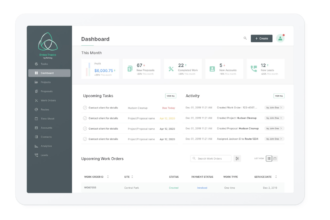As the calendar turns to 2024, the transcription industry stands at the forefront of significant technological evolution. This upcoming year promises to bring groundbreaking advancements in transcription software, reshaping how we approach voice-to-text conversion in various professional domains.
The transcription industry is poised to witness significant advancements, propelled by established companies and their innovative software. Here’s a look at the trends
Emerging Trends in Transcription Software for 2024
The transcription industry is gearing up for significant advancements, driven by the continuous evolution of AI and machine learning technologies. These innovations are expected to offer more accurate and context-aware transcriptions, which could lead to wider adoption in diverse professional settings, including corporate, academic, and research environments.
One of the key trends to watch is the advancement in real-time transcription and support for multiple languages. This development is crucial for global accessibility, making transcription services more applicable to international conferences, media broadcasting, and educational content.
Enhanced AI-driven transcription capabilities are also on the rise. The industry anticipates more sophisticated speech recognition technologies that can handle a broader range of audio qualities and diverse accents. Such advancements could significantly broaden the applicability of transcription services across various sectors, making accurate transcription of lectures, interviews, and meetings increasingly crucial.
Increased Accessibility and User-Friendly Interfaces
The transcription industry is also focusing on user accessibility in software design. The goal is to make transcription software more intuitive and user-friendly, accommodating users with varying levels of technical skills. This approach includes the introduction of more intuitive editing tools and workflow integrations, enhancing the overall user experience.
The Continued Relevance of Human Expertise
Despite these technological strides, 2024 will continue to be relevant to human transcriptionists. Their role is expected to become more crucial, especially in specialized sectors. Automated systems, no matter how advanced, still struggle with certain aspects of transcription that require human intuition and understanding.
For instance, in legal, healthcare, and law enforcement transcription, the stakes are high, and the cost of errors can be significant. In these fields, a human transcriber’s nuanced understanding and judgment are indispensable. Recognizing this, the industry is expected to continue valuing and integrating human expertise alongside technological solutions.
The Future Role of Human Transcriptionists
Ben Walker, CEO and Founder of Ditto Transcripts, a company specializing in human transcription services in legal, law enforcement, and healthcare sectors, comments on this trend. “As we look towards 2024, it’s clear that the collaboration between human skill and advanced technology will be more vital than ever. In fields where accuracy is not just a preference but a necessity, the human element in transcription remains irreplaceable.”
Companies like Ditto Transcripts are already preparing to navigate this landscape by focusing on training their transcriptionists to work in tandem with evolving software, ensuring the highest levels of accuracy and efficiency.
Integrating Advanced Software with Human Skill
In 2024, the most successful transcription services are expected to integrate advanced software capabilities effectively with the nuanced understanding of human transcriptionists. This hybrid approach aims to leverage the best of both worlds: the speed and efficiency of AI with the discerning judgment and contextual understanding of humans.
Such a collaborative model improves overall accuracy and enables faster turnaround times for transcription services. Moreover, by allowing AI to handle more routine transcription tasks, human transcriptionists can focus on complex, high-stakes projects where their expertise is most valuable.
As we enter 2024, the transcription industry is poised for dynamic evolution, marked by technological advancements and a renewed appreciation for human expertise. The upcoming trends indicate a harmonious blend of software efficiency and human skill, setting a new standard for accuracy and reliability in transcription. This balanced approach promises to elevate the industry to new heights, ensuring that the transcription services meet their clients’ diverse and evolving needs with utmost precision.









